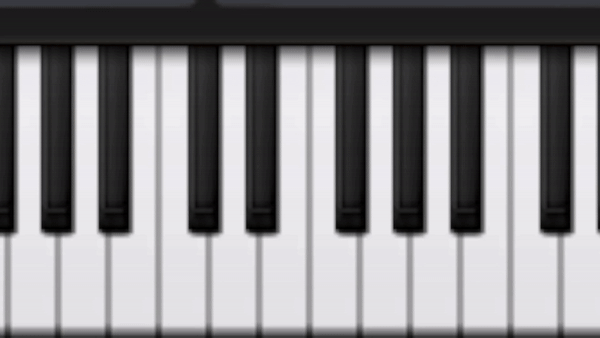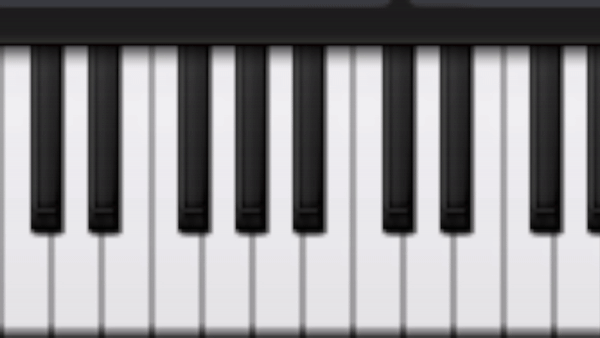
What is a Chord, you ask? Chords are the bread and butter of popular songs in the modern age. The music that the guitarist strums while singing? It is made up of chords.
They are the make-up of your vocabulary and an essential music theory concept you cannot forgo as a musician.
In this post, we will explore their mechanics, how they are formed, and how you will apply them to your playing.
What is a chord?
Chords are blocks of 2 or more notes played together to create a harmony of notes.
The notes that make up a chord are called Chord Tones, and they give the chord their unique properties.
We will explore the different types of basic chords you will encounter.
Types of Chords
Triad Chord
Triads are the most commonly used type of chord. They consist of 3 notes and are built on the interval of 3rds, resulting in the Root, 3rd, and 5th notes.
- Root Note: First note of a triad. It dictates the key the chord is from.
- 3rd: The second note of a triad. It is usually a Major 3rd or Minor 3rd.
- 5th: The third note of a triad. It is a Perfect 5th away from the Root note.
The 4 basic triads are the Major, Minor, Augmented, and Diminished.
Major Chord
Major chords are formed from the 1st, 3rd, and 5th notes of the Major scale. They contain the Major 3rd as the second note.

A Major chord consists of a Major 3rd interval between the root and 3rd notes and a Minor 3rd interval between the 3rd and 5th notes. They have a brighter tonality than their counterpart, the Minor chord.
Major chords are notated using uppercase letters, like C, F#, and B.
Examples of Major Chord

C Major Chord 
F# Major Chord 
B Major Chord
Minor Chord
Minor Chords are formed from the 1st, 3rd, and 5th notes of the Minor scale. They contain the Minor 3rd as the second note.

A Minor chord consists of a Minor 3rd interval between the root and 3rd notes and a Major 3rd interval between the 3rd and 5th notes. They have a darker tonality than their counterpart, the Major chord.
Minor chords are notated with a lowercase ‘m’, like Cm, F#m, and Bm. Another notation is a hyphen (-), like C-, F#-, and B-.
As mentioned in a previous post, many concepts are described in relation to the Major scale. For example, if a Major Chord is made up of 1 3 5, a Minor Chord is made up of 1 ♭3 5.
Examples of Minor Chord

C Minor Chord 
F# Minor Chord 
B Minor Chord
Augmented Chord
If Major Chords are already considered bright, are there any brighter chords than Major? Yes.
The Augmented chord is derived from the Augmented scale. The Augmented chord is made up of 1 3 #5.

The Augmented chord consists of a Major 3rd interval between the root and 3rd notes, and the 3rd and 5th notes. This chord is ‘wider’ than the Major chord making it brighter.
Augmented chords are notated using a plus (+) symbol, like C+, F#+, and B+.
Examples of Augmented Chord

C Augmented Chord 
F# Augmented Chord 
B Augmented Chord
Diminished Chord
As for the Augmented chord, the Diminished chord is darker than the Minor chord. The Diminished chord is made up of 1 ♭3 ♭5.

The Diminished chord consists of a Minor 3rd interval between the root and 3rd notes and the 3rd and 5th notes. This chord is ‘narrower’ than the Minor chord making it darker.
Diminished chords are notated with a ‘dim’, like Cdim, F#dim, and Bdim. Another notation is a superscript circle (o), like Co, F#o, and Bo.
Examples of Diminished Chord

C Diminished Chord 
F# Diminished Chord 
B Diminished Chord
Why do I need to learn triads?
Triads are the foundation for more complex chords and are the most basic form of chords you will encounter.
This is especially so for Major and Minor Chords, which play a huge part in the Major scale which we will cover in a later post.
Inversions
Inversions are Triads that have their notes rearranged.
There are 3 inversions for triad chords, determined by which note is at the bottom of the chord, known as the Bass note.
Note: The Root and Bass notes are 2 different types of notes. Root notes determine the chord’s KEY, and are not necessarily the chord’s lowest note. However, the bass note is ALWAYS the lowest note of the chord.
Root Position
Chords at the root position have the Root note as the Bass note of the chord. The notes can be arranged as:
- 1 3 5
- 1 5 3
1st Inversion
Chords in 1st inversion have the 3rd as the bass note of the chord. The notes can be arranged as:
- 3 1 5
- 3 5 1
2nd Inversion
Chords in the 2nd inversion have the 5th as the Bass note of the chord. The notes can be arranged as:
- 5 1 3
- 5 3 1
Why learn inversions?
Inverted chords are similar to chords in their Root position. However, inversions provide more chord agility when playing chord progressions.
Chord Agility
Chord Agility measures how fast you can switch from one chord to another.
Inversions help with chord agility by mapping notes of the next chord closely with the current chord you are playing. This helps to traverse the chord progression with ease and little movement.
Have a look at the 2 examples below, one without the use of inversions and one with the use of inversions:

With Root Position 
With Inversions
Suspended Chord
Suspended chords are like cliffhangers – they will leave you in suspense if they don’t resolve.
Suspended chords are made up of 1 4 5 or 1 2 5, respectively named as:
- Suspended 4 Chords (Sus4) – 1 4 5
- Suspended 2 Chords (Sus2) – 1 2 5

Csus4 Chord 
Csus2 Chord
Why are they called suspended?
Compare them against Major chords, 1 3 5. Do you see a difference? Suspended chords have their Major/Minor 3rd omitted and are replaced with the 2nd or 4th degree.
Why is this important? They provide tension and set up for a release in the following chord.
Have a listen to this chord progression:
Have a listen to the following audio of Csus4 going to C Major. Do you hear the tension and release?
Sus4 chords have a stronger effect because the 2nd note in the Sus4 chord is a semitone away from the Major 3rd, creating more friction and thus a stronger resolution. Here is Csus2 going to C Major:
To bring home this idea of tension and release, listen to the following audio and notice how you feel:
Slash Chord
Slash chords are chords that are notated with a slash. Some examples of slash chords are C/G, Am/D, and B♭/G.
The letter on the left side of the slash represents the chord you play on the right hand, while the letter on the right side represents the Bass note.
For the slash chord C/G, you will play the C Major chord on the right hand and the G note on the left. Have a look at the example below:

Slash chords provide quick access to chords by a shortchange of notation, without the need for complex notation. An Fmaj7 chord can be notated as Am/F easily.
Add Chord
Add chords are chords that ‘add’ extra notes to increase their harmonic texture. Examples of add chords are Cadd2 and Fadd4.
For the add chord Cadd2, you will play the C Major chord as per normal, and add the 2nd degree of the C Major scale, which is D. This makes the full chord C D E G. Have a look at how Cadd2 will be played:

Power Chord
Power chords emerged as a popular chord in the era of Rock Music, widely played by electric guitar players because of their simplicity yet effectiveness.
Power chords consist of only the 1st and 5th degrees of the Major scale. The absence of the 3rd keeps the chord neutral, neither Major nor Minor.
Because only the 1st and 5th degrees are needed, guitarists do not need to bend over backward to get the full chord shape on their instrument
Here is a straightforward article about Power Chords by Fender:
Power chords are notated with a ‘5’ right after the chord, such as C5 and F#5.
How to practise chords?
Now that you know how different chords are formed, throw away that cheat sheet you have been referring to and learn to understand the DNA of chords.
To do this, practise by visualizing chords from scratch, starting from any note.
For example, starting on C, run through the list and visualize:
- C Major
- C Minor
- C Augmented
- C Diminished
- Csus4
- Csus2
- Cadd2
- Cadd4
- Cadd6
- C/G
- C5
In this way, you will know the Chord Tones by heart, without the need to refer to a physical reference.
Conclusion
The chords mentioned in this post are just the tip of the iceberg. There are a myriad of ways to create chords in music.
We will explore more chords such as 4-note chods (7th chords), diminished chords, and extended chords in future posts.
Now that you know the basic chords, we will be able to cover the next big topic, which are Diatonic Chords.
